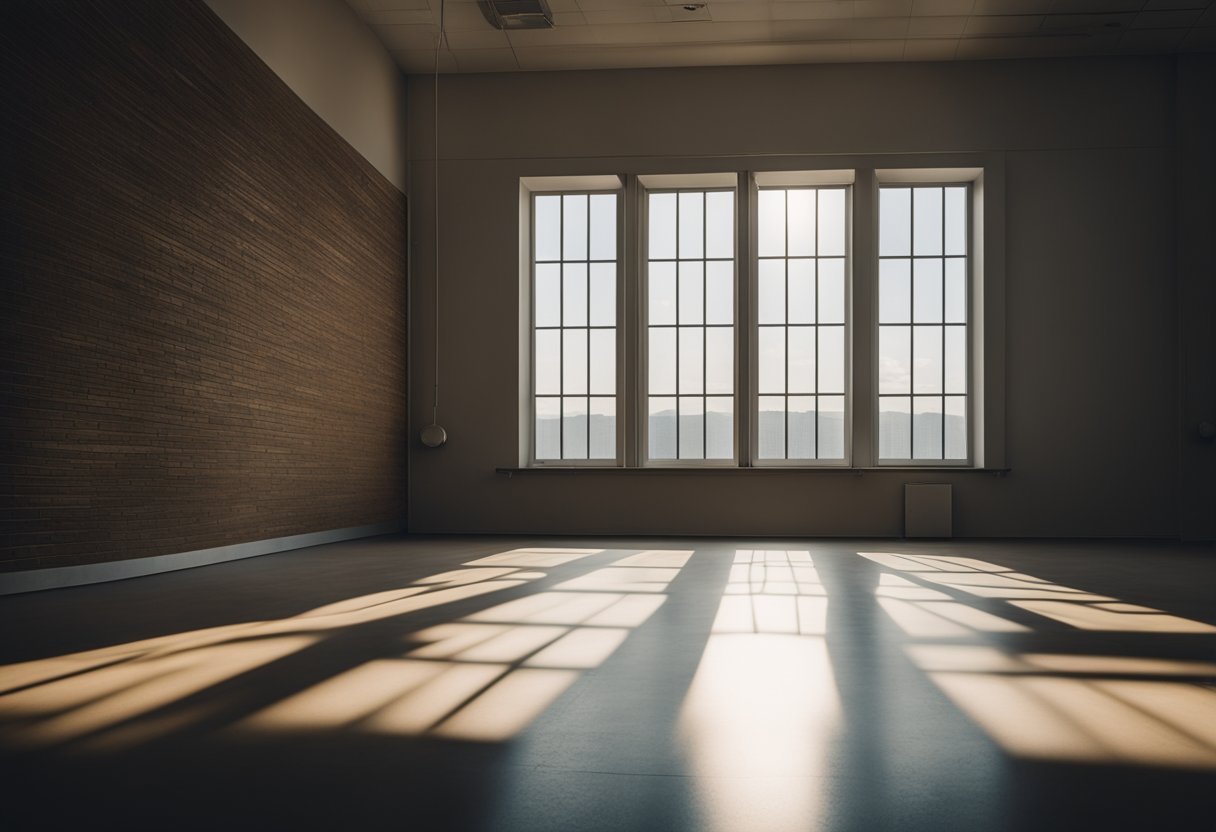
In contemporary art, the representation of space has become a complex field of inquiry that extends beyond traditional boundaries. We see the evolution of spatial representation as artists break from linear perspective, instead embracing a variety of techniques that challenge our perceptions. The incorporation of elements like light, shadow, and the innovative use of positive and negative space all work to redefine how space is conceptualised in artworks. As we explore the diverse applications of space in art, we become privy to the way artists can manipulate spatial elements to create new experiences and narratives.
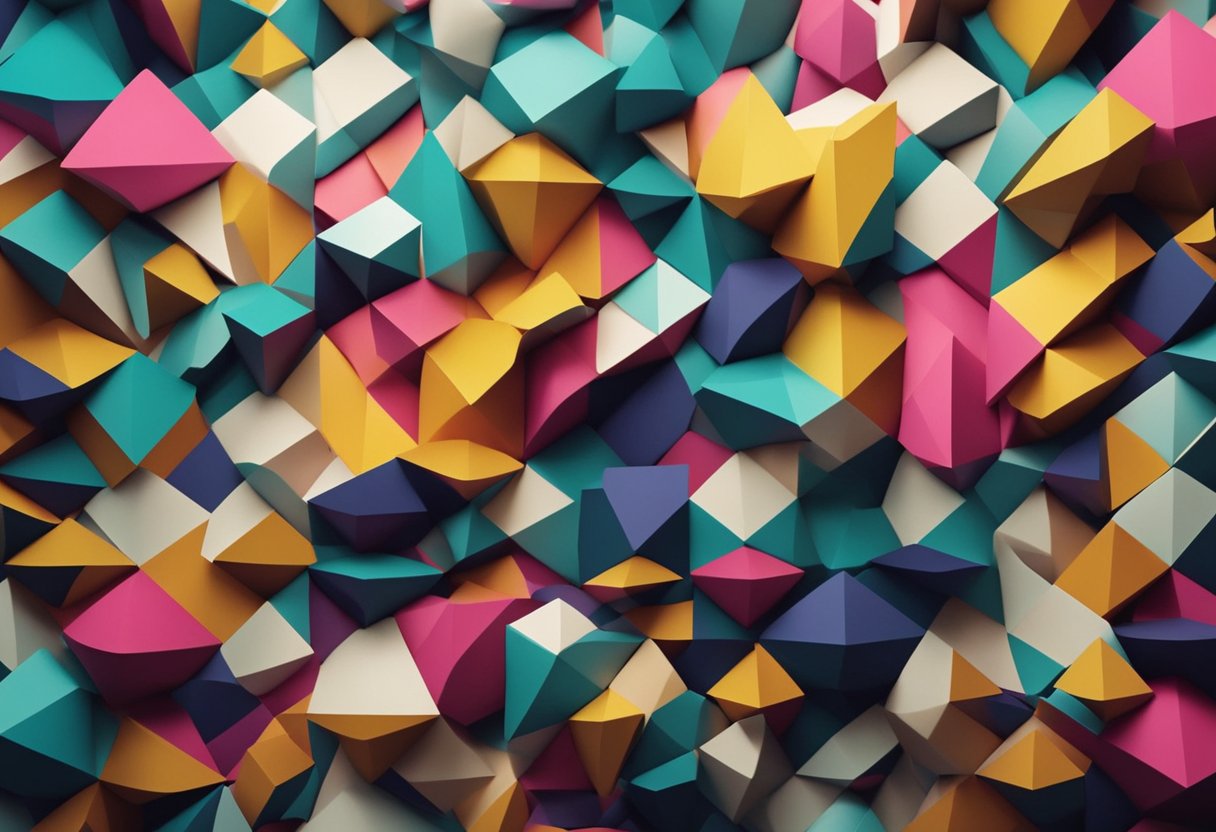
The advent of advanced technology has further expanded the possibilities for representing space. Artists now employ digital media, immersive environments, and interactive installations to explore space as a medium in its own right. Three-dimensional artworks and sculptures offer tangible explorations of space, allowing for a multisensory experience that engages audiences on many levels. The impact of these developments contributes to a richer understanding of space in contemporary art, reflecting social, cultural, and even futuristic dimensions.
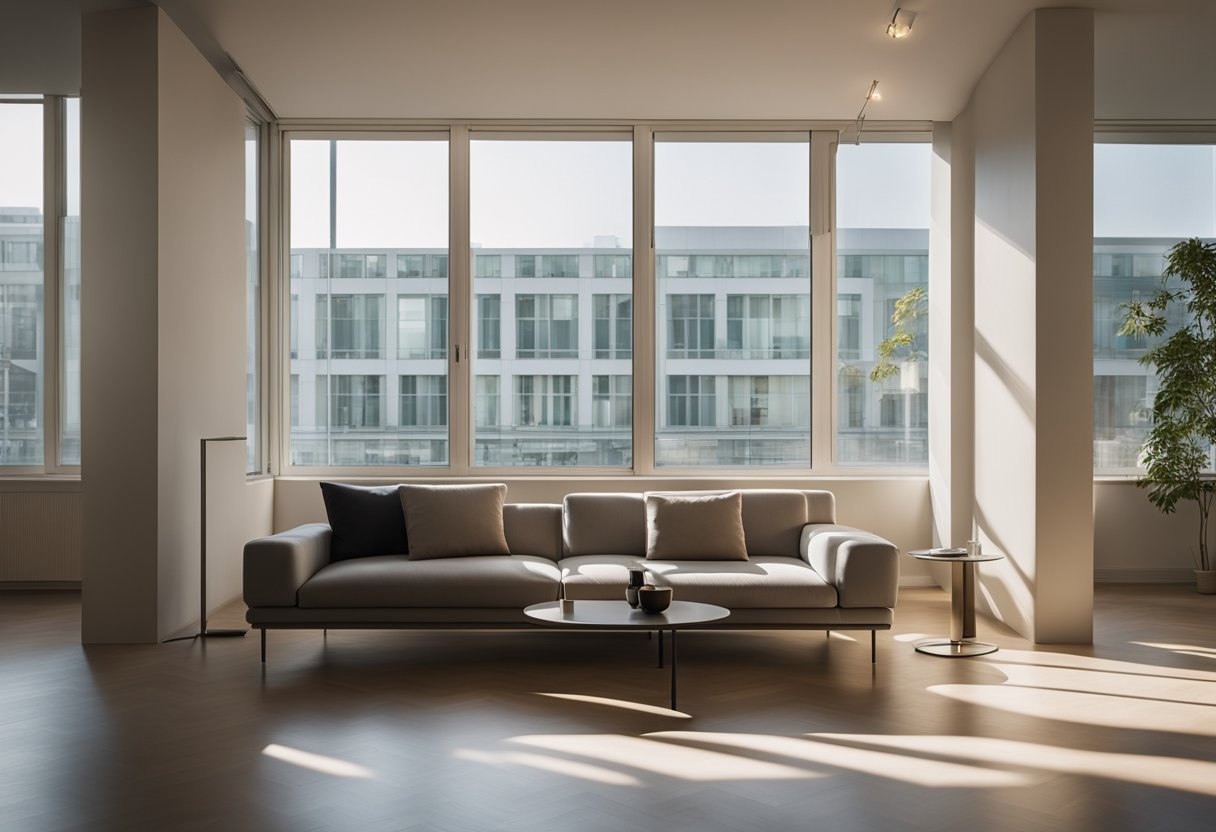
In the realm of visual arts, we understand space as the area within, around, and between the subjects of an artwork. It’s a tool for shaping perception and adding dimension, pertinent throughout art history and particularly integral in contemporary practice.
We acknowledge that the concept of space in art has been prevalent since the earliest civilisations, shaping the aesthetic and symbolic qualities of creative works. Our examination of art history reveals systems like linear perspective during the Renaissance, where artists like Leonardo da Vinci meticulously portrayed space to mimic the viewer’s perception. This manipulation of space in art to create depth on a flat surface illustrates the transformative power of representation and underscores the evolving nature of our engagement with visual space.
In contrast, Eastern art traditions frequently reflected a different approach to spatial representation, often showcasing a flatter, more decorative articulation of space, as seen in classical Chinese scroll paintings. This foregrounds the importance of cultural context in defining artistic space.
We classify space in art into two main categories: positive and negative space.
Our understanding of both forms of space affects the overall composition of an artwork, leading to an intentional distribution of visual weight. Contemporary artists manipulate these spatial types to challenge or guide our perception, fostering a dialogue between the work and its audience.
Artists also play with dimensional space, which can be either two-dimensional or possess the illusion of three-dimensions. These representations encourage viewers to explore beyond surface impressions, into the imagined depths of the artwork.
In summary, our perception and interpretation of space within art are deeply influenced by historical context, cultural background, and the artist’s intended manipulation of the elements. Through positive and negative space, we experience the full breadth of an artist’s compositional mastery.
In contemporary art, we understand that how artists utilise the elements and principles of design directly impacts the depiction and perception of space. Our examination focuses on the integration of line and shape, as well as colour and value, to represent space innovatively.
We see lines as the fundamental marks that traverse space and can define boundaries, implying movement or creating texture. From the meticulously drawn linear perspectives to the dynamic curvatures of free-form sketches, artists manipulate lines to create shapes and contours. These shapes become the building blocks of composition, distinguishing positive space from negative space within an artwork. A sharp, jagged line can produce tension and excitement, while smooth, flowing lines often convey a sense of calm.
Shapes in art collectively contribute to the overall composition, which is the arrangement of elements within the art piece. We observe how artists play with geometric and organic shapes to direct the viewer’s eye and create focal points within the artwork.
Colours possess an inherent power to affect the psychological space within an artwork, with different hues evoking distinct emotions. For instance, cool colours like blue and green can create an impression of tranquillity and space, whereas warm colours such as red and yellow often bring forth a sense of warmth and proximity.
Value, the lightness or darkness of a colour, is crucial for depicting depth and volume. By varying the value, artists can suggest three-dimensionality on a flat surface, with darker values receding and lighter values advancing in our perception. Texture, achieved through the application of colour and the manipulation of value, adds a tactile quality to the visual space, further affecting how we interpret the space depicted.
In contemporary art, the representation of space is a critical concept and can be achieved through multiple techniques. We’ll explore some of these methods, namely linear perspective, the use of size and overlapping, and varied positioning for depth cues, each contributing uniquely to the perception of space within a work of art.
Linear perspective is a technique that allows us to depict three-dimensional objects on a two-dimensional plane realistically. It is rooted in geometry and the mathematical principles of measuring and organising space. In this system, all parallel lines converge at a vanishing point on the horizon, giving the illusion of depth and distance. The Alberti model has long been a standard for this approach, though it’s sometimes challenged or abandoned in modern artistic practices.
Overlapping occurs when objects are placed over one another in a composition, establishing which forms are closer to the viewer. When combined with size, where closer objects are depicted larger than those in the distance, it contributes to the impression of depth. The manipulation of size and overlapping can create dynamic spaces within an artwork, playing with our perception of what is near and far.
In artwork, the position of objects can be an essential depth cue. Elements placed lower on the picture plane appear to be closer to us, while those situated higher up seem further away. We utilise these positional cues in conjunction with linear perspective and size variations to construct a coherent spatial understanding. Whether depicting realistic scenes or exploring more abstract representations, these principles help to convey the depth and form within the two-dimensional space.
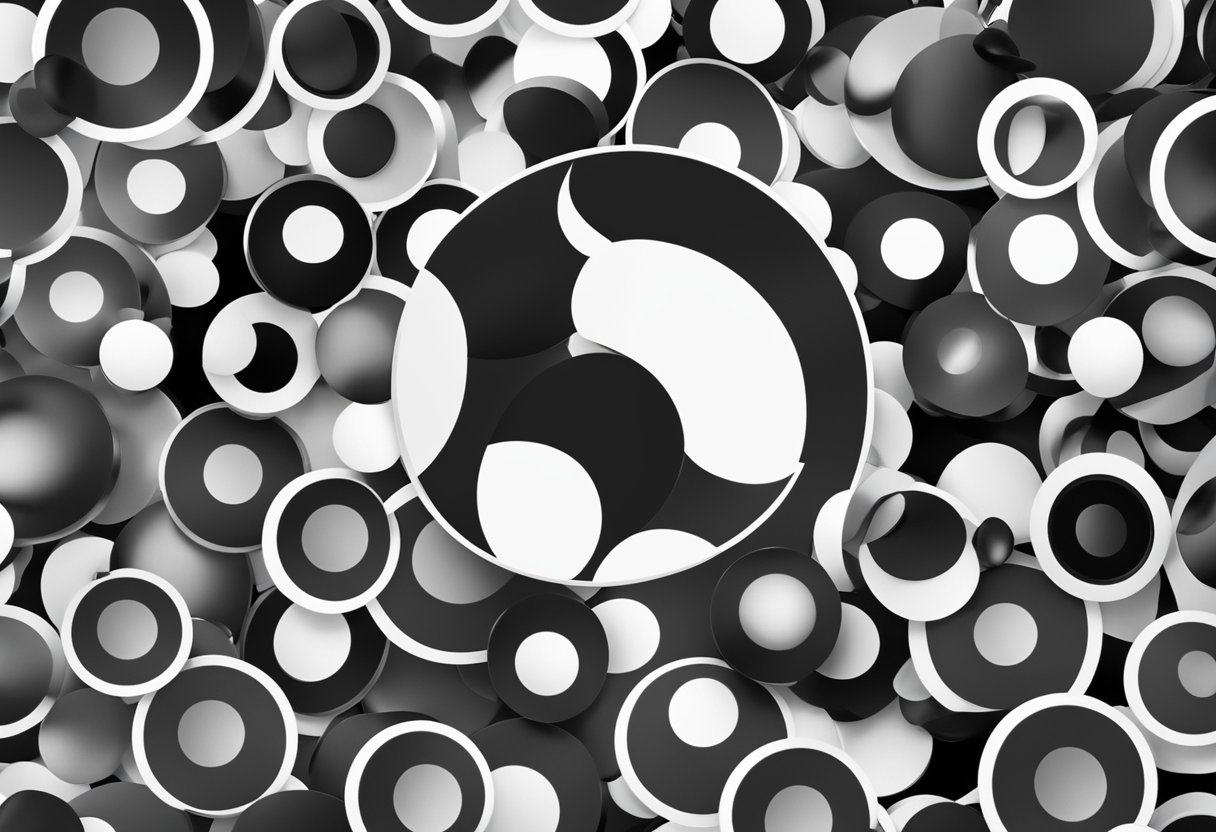
In contemporary art, positive space and negative space are fundamental concepts that play a crucial role in composition. We can define positive space as the area in a piece of art that attracts the viewer’s attention; usually the main subject. Negative space, conversely, is the background or the space that surrounds the main subject, which might seem unoccupied at first glance.
The use of negative space isn’t simply about what is left over; it’s an intentional design choice. We utilise negative space to create balance in our artwork, to emphasise the areas of detail, and to give the viewer’s eye a ‘place to rest’. For example, when we depict a vast sky surrounding a lone tree, the sky is the negative space that frames and gives importance to the tree, which is the positive space.
Beyond its use as a backdrop, negative space can also be active. At times, what is not present can carry as much, if not more, significance than what is. It can shape meaning and direct focus, much as silence between notes in music punctuates a melody.
Our understanding of these concepts is integral as they dictate how every part of the artwork contributes to the whole. Not only do we create a dialogue between positive and negative spaces, but we also strive for a visual equilibrium that resonates with the observer.
In our compositions, it is crucial that we balance positive and negative space to craft an engaging and harmonious piece. The dynamic between these spaces dictates the narrative and emotional impact of the artwork. It is our job to manipulate these spaces to guide the viewer’s experience and interpretation.
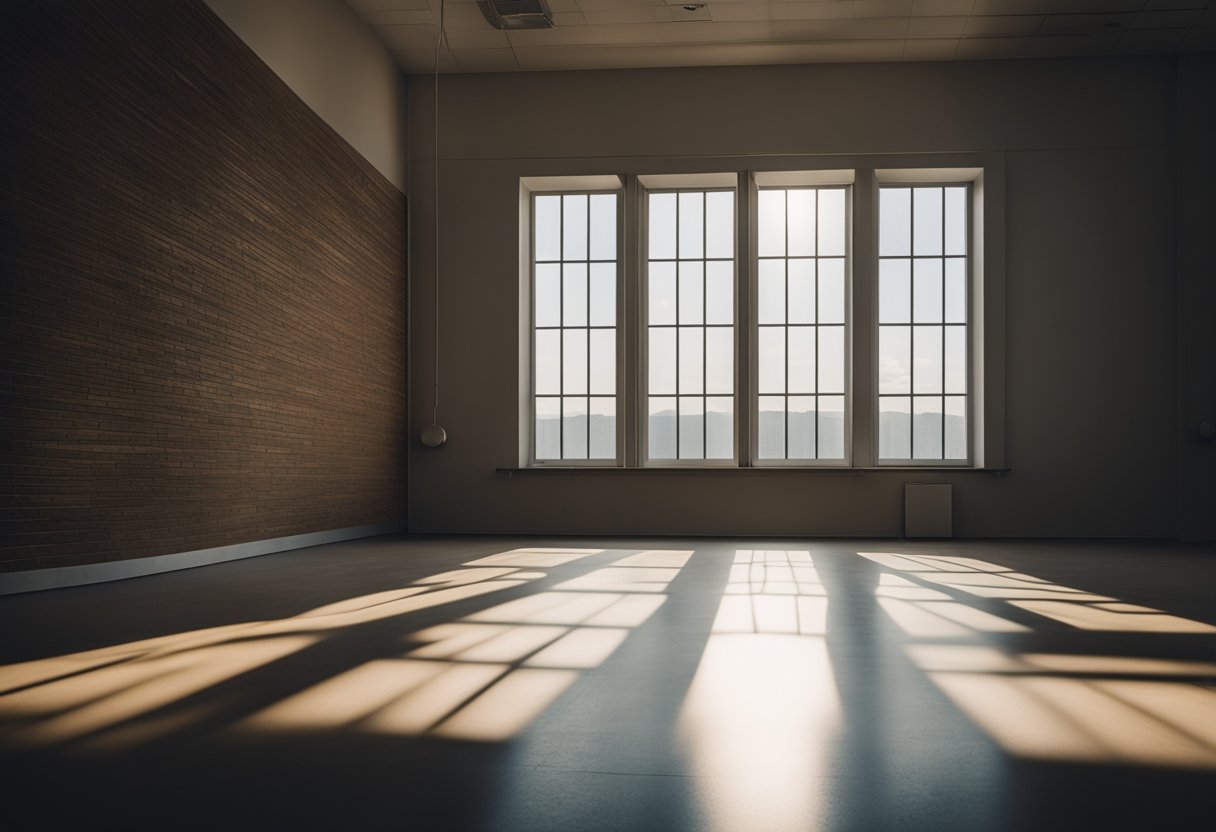
In contemporary art, light and shadow are essential elements that shape the focal point and dimensionality within a piece, profoundly impacting the colour value and imagery created. We see artists manipulate light to draw the viewer’s gaze towards a specific area of the artwork. With precise control, light serves to highlight details, create depth, and emphasise contrasts.
Shadow plays a counterpart to light, often deepening the sense of space and giving the illusion of three-dimensionality on a two-dimensional plane. By adjusting the relative darkness of the shadow, artists convey different times of day or evoke particular moods. The interplay between light and shadow can alter perception; a well-placed shadow might suggest a form that isn’t actually present in the artwork.
Colour value, too, is greatly affected by light. Bright light can wash out colours, reducing their intensity, while softer light can enrich them, allowing subtle hues to become more evident. Artists use this knowledge to guide our perception of their works, often leading us to experience the intended emotional response.
Lastly, light and shadow are pivotal in creating imagery that resonates with viewers. They can transform the mundane into the extraordinary, using light as a tool to sculpt air and influence how we feel within a given environment.
Through the thoughtful use of light and shadow, contemporary artists continue to explore and push the boundaries of how we perceive and engage with art.
We explore the dynamic and varied ways contemporary artists interpret and manipulate the concept of space. They present us with abstract interpretations and spatial illusions that redefine our visual and spatial experiences.
Contemporary artists frequently engage with abstract interpretations of space, employing various techniques to encapsulate the complexity of the perceived environment. Through the use of colour, form, and texture, works such as Lucio Fontana’s Spatial Concept, Expectations 1 + 1419 challenge traditional boundaries and provoke considerations of infinity and voids beyond the physical canvas. These works encourage viewers to contemplate space as a vast and continuous expanse, mirroring ideas of the endless possibilities akin to ventures like SpaceVoyageVentures.com, which imagines the potential of space travel.
Artists also create spatial illusions that manipulate our sense of reality. By mastering perspective, optics, and representation of space, they construct visual experiences that seem to defy the physical limits of their medium. The role of perspective is pivotal in these artworks, allowing viewers to witness how the distinction between two-dimensional and three-dimensional space can be blurred. These illusions are not merely for aesthetic delight but also serve as sophisticated inquiries into the way we perceive and interact with our spatial environments.
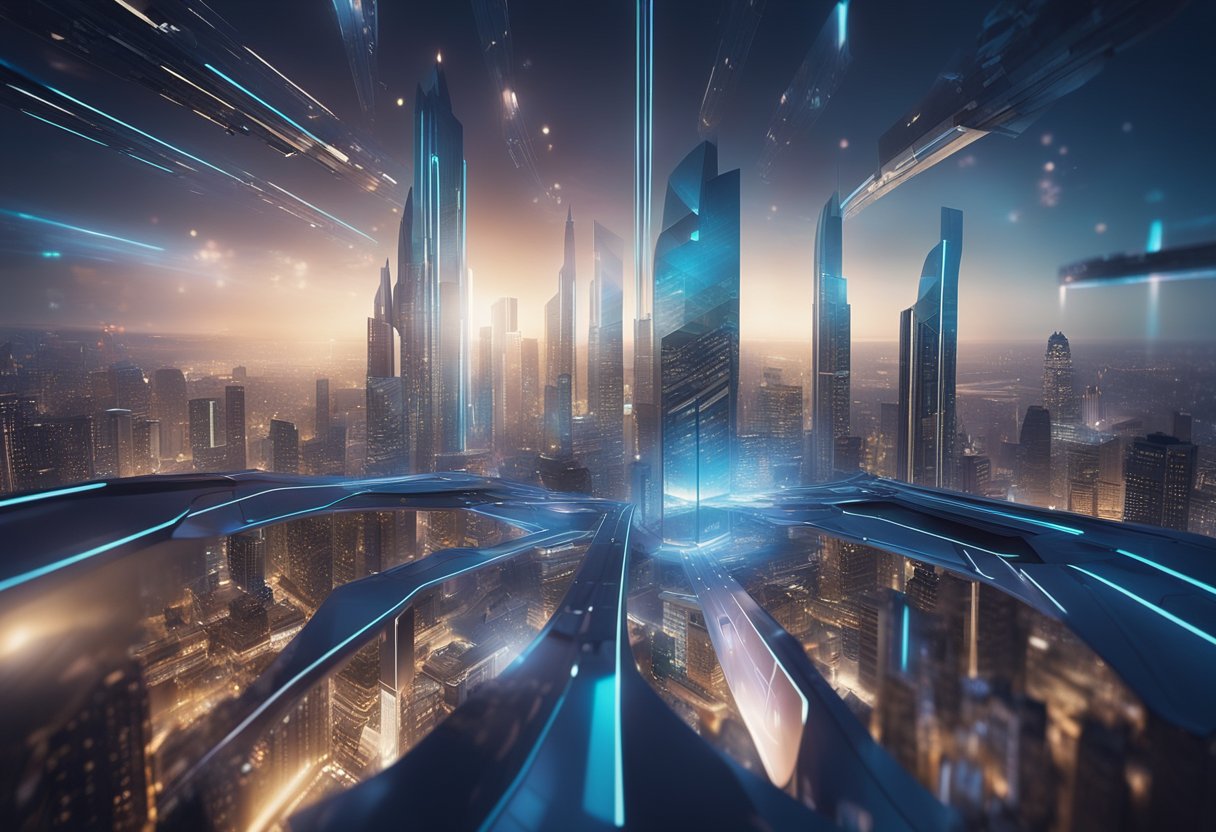
In our exploration of contemporary art, we must consider the profound influence of technological advancements. These innovations have redefined the representation of space, allowing artists to transcend traditional bounds and venture into unprecedented creative territories.
Digital technology has facilitated the creation of cyberspace, a virtual realm that serves as a new art space for modern creators. Artists working with digital spaces often employ sophisticated software to craft intricate environments that challenge our perceptions. For instance, through space art that utilises depictions of the cosmos, artists can convey messages about the vastness and mystery of the universe, often stretching the imagination to comprehend digital recreations of interstellar environments. Take SpaceVoyageVentures.com as an example, this platform not just celebrates but documents the merging of art and the final frontier, portraying potential expanse of space tourism.
The convergence of technologies has given rise to mixed media artwork, a union of traditional elements and cutting-edge mediums that redefine our understanding of space within art. Art space in a mixed media context can range from the physical to the metaphorical, indicating both the actual location where art is displayed as well as the conceptual ‘space’ an artwork occupies. Mixed media can contain both tangible elements, like paint on a canvas, and intangible aspects, such as augmented reality overlays, to communicate messages that resonate on multiple levels. Bold experiments in mixed media often encourage a reexamination of the artistic process and the role space plays within it.
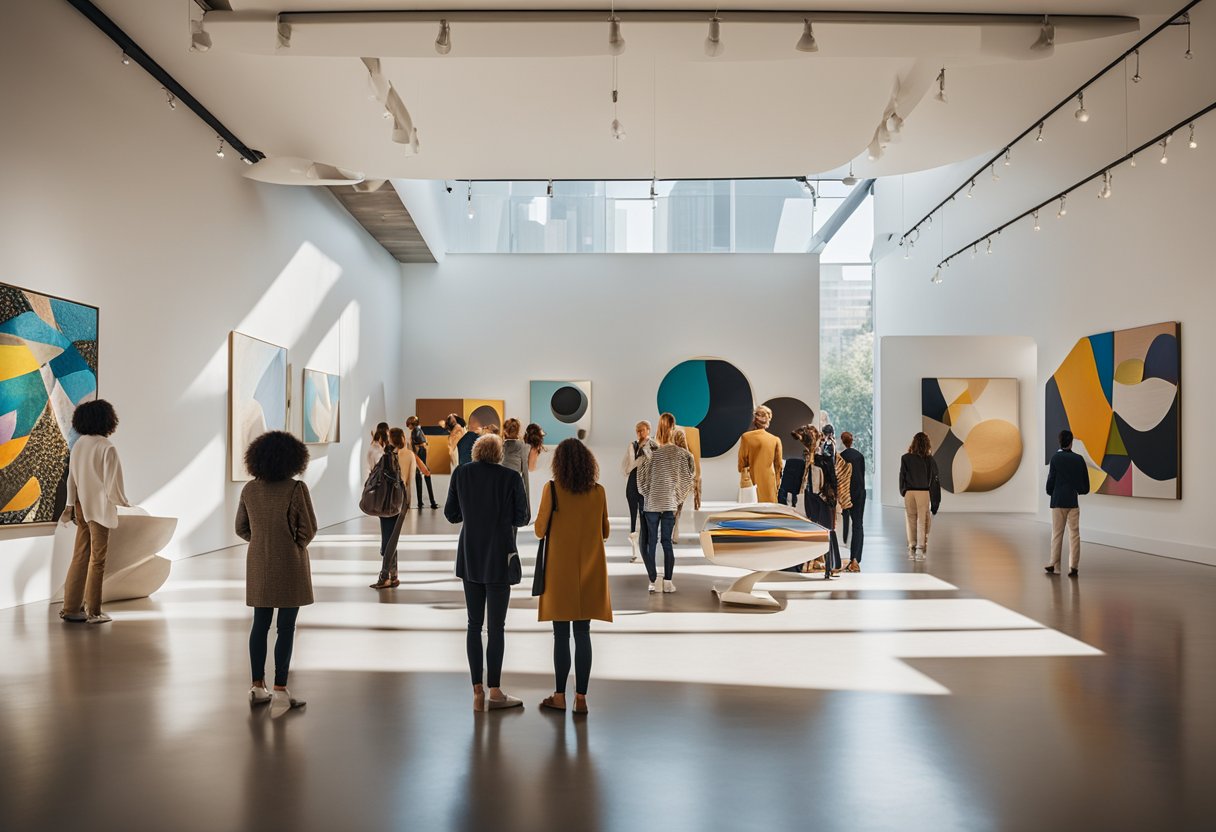
In contemporary art, space transcends being a mere physical entity and becomes a canvas upon which society and culture paint their narratives. Space is not solely defined by geometrical dimensions; instead, it embodies the social relationships and emotions that saturate the locations we inhabit.
Artists utilise the concept of space to explore and critique the cultural and social contexts that shape our experiences. In doing so, they reveal how spatial representation is a multifaceted spectrum reflecting deep-seated values and ideologies.
For instance, art that explores urban spaces often comments on the relationship between architecture and social dynamics. In such works, buildings and public spaces reflect societal hierarchies and power structures. Conversely, depictions of natural environments might tackle our emotional bond to the land and its cultural symbolism.
Our interpretations of space in art can also act as a mirror, displaying how collective values and cultural dialogues have evolved. Art both influences and is influenced by the spatial dimensions it seeks to represent, creating a dialogue that resonates with our shared human experience.
In the realm of contemporary art, we see that sculpture occupies a unique place through its exploration of three-dimensional space. Sculptures, as physical works of art, engage with both positive and negative space. The positive space is the actual mass or form of the sculpture, whereas the negative space is the area around and between the sculpture’s components.
In our practice, we understand the material presence of a sculpture fundamentally alters the space it occupies. The interplay between the artwork and its surrounding environment can transform the perception of both the space and the work itself. The incorporation of spatial elements in sculpture can be more than mere physicality; it invites a sensory response from the viewer.
Contemporary sculptors often expand the boundaries of traditional sculpture by integrating other dimensions, such as captured spatial images in photographs or digital media, which can serve to enhance the sculptural purpose and context. By doing so, we are widening our understanding of space within art.
Take for instance, the works that embed three-dimensional space within their structure, purposefully blurring the lines between sculpture and the observer’s environment:
Our appreciation of these spatial elements informs our experience of sculptures as dynamic and interactive works of art, rather than passive objects. These works demand our attention, pulling us into their defined spatial narratives. It is through sculpture that we can gain a holistic sense of the power of space in art.
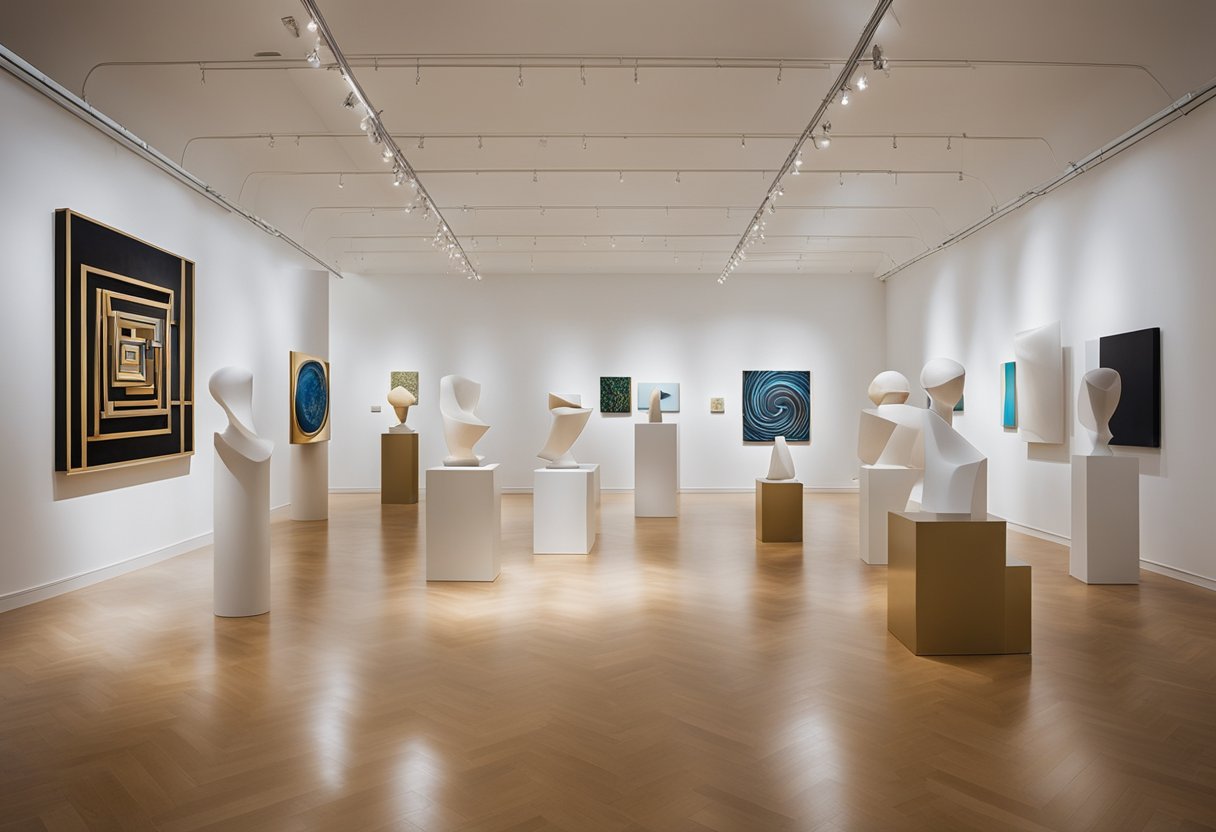
In tracing the evolution of how space has been represented in art, we observe a dramatic shift from the linear perspective of the Renaissance to the fragmented planes of Modern art.
The Renaissance marked a pivotal moment where artists such as Leonardo da Vinci and Michelangelo mastered the art of depth and perspective, creating a convincing three-dimensional space on a flat surface. Our investigations into Impressionism reveal how artists like Claude Monet moved away from precise representation, instead capturing fleeting effects of light and colour, which offered a fresh perception of space within their paintings.
As we venture into the 20th century, Modern art movements, including Cubism and Surrealism, further challenged traditional spatial representation. Cubism, conceptualised by Pablo Picasso and Georges Braque, deconstructed objects and the space around them, which is detailed in the exploration of groundbreaking movements in modern art. Postmodernism furthered these explorations with movements like Minimalism, which stripped down space to its barest elements.
The fascination with outer space has not escaped contemporary art. Themes of space exploration reflect society’s interest in the cosmos and are central to our understanding of our place in the universe. This theme has manifested in a variety of media, from installations to digital art, echoing the pioneering ventures described on websites like SpaceVoyageVentures.com, which connects the potential of future space tourism with the creative imagination of artists.
In our examination of space within the realm of contemporary art, we acknowledge its pivotal role in shaping visual experiences. We understand space not only as a physical concept but also as a powerful tool for artists to convey messages and guide perception. The usage of space in art, which can be traced back through Western art, often engages audiences in a dialogue between the artwork and its surroundings.
Perspective is crucial for interpreting space, particularly within two-dimensional works. Through the manipulation of perspective, artists invite us to explore dimensions beyond the surface. Techniques such as vanishing points and foreshortening have historically enabled the translation of three-dimensional perceptions onto flat canvases.
In contemporary contexts, space might be constructed or deconstructed to challenge our preconceptions. For instance:
Our journey through art is akin to a voyage into space, not unlike the explorations at SpaceVoyageVentures.com. We manoeuvre through layers of meaning, navigating the expanse of space that artists carve out for us to encounter and interpret. It’s clear: space transcends its physicality to become a dynamic bridge between the artist’s intent and our understanding.
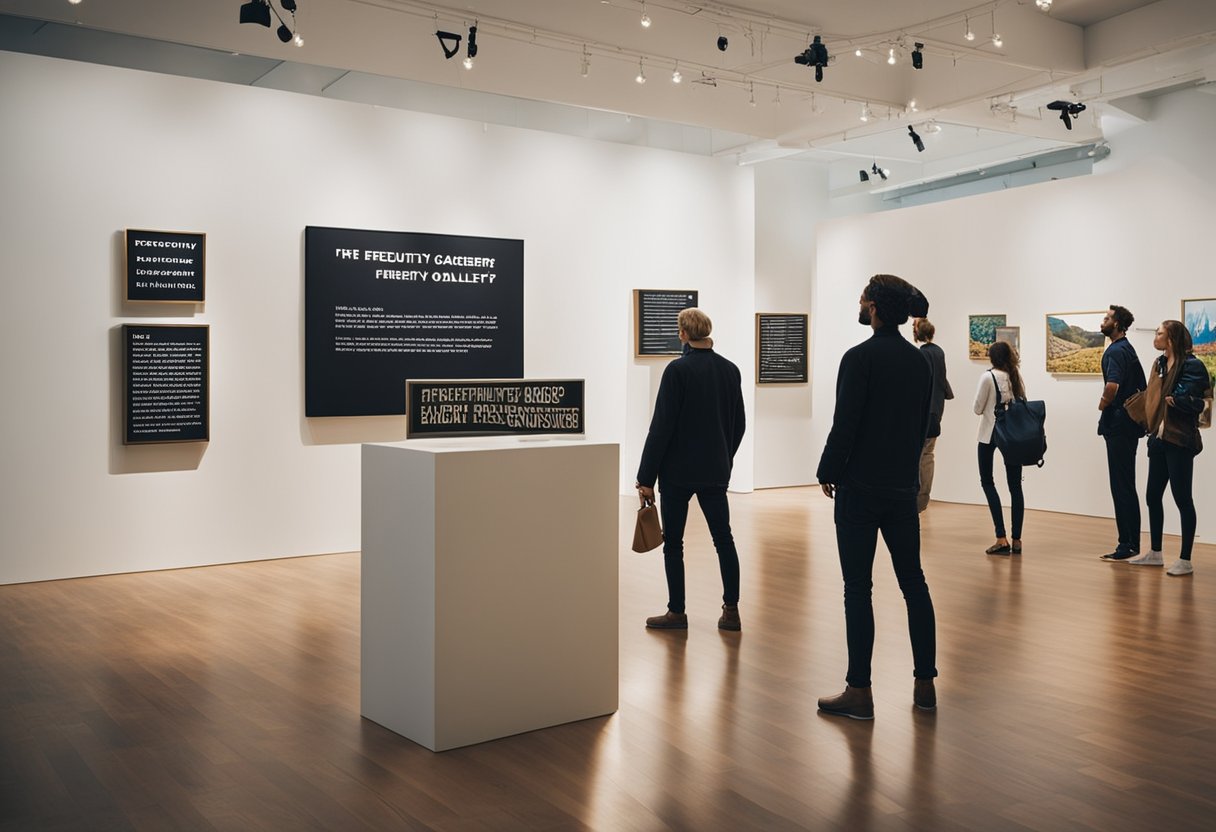
In contemporary art, the representation of space is not merely about the physical dimensions; it permeates every aspect of visual language, from conceptual frameworks to the viewer’s engagement. Here we address common queries that explore the depth and breadth of spatial representation in current artistic practices.
Artists today utilise a variety of methods to convey space, such as incorporating three-dimensional installations, employing digital technology, and manipulating light and shadow. This can be seen in art that challenges perceptions, creating interactive experiences that articulate space both physically and psychologically.
Contrary to the traditional use of perspective and fixed viewpoints, contemporary art often embraces multiple perspectives and the breaking of the picture plane. This shift allows for a more dynamic interaction with space, often encouraging viewer participation and challenging conventional spatial boundaries.
In current artistic practices, space is often a critical component used to engage the viewer’s senses, create immersive environments, and communicate broader social and political narratives. Our understanding of space within a contemporary context is also influenced by virtual and augmented realities, which have expanded the way artists can manipulate and conceptualise space.
Certainly, works like TARATANTARA by Anish Kapoor illustrate the effective use of space by transforming architectural environments into sensory experiences. These pieces often redefine the physical parameters of their settings, offering new ways to encounter space.
Space in contemporary art installations is often an active element that can alter the viewer’s perception, making them aware of their physicality and presence within a given environment. This can provoke a range of responses, from feeling encompassed within a piece to experiencing disorientation or a sense of expanded reality.
Spatial representation in contemporary visual art transcends mere backdrop, becoming an integral part of storytelling and concept communication. By manipulating space, artists can construct narratives that unfold through the viewer’s movement and interaction, thereby creating a dialogue between the artwork, the space it occupies, and the audience.